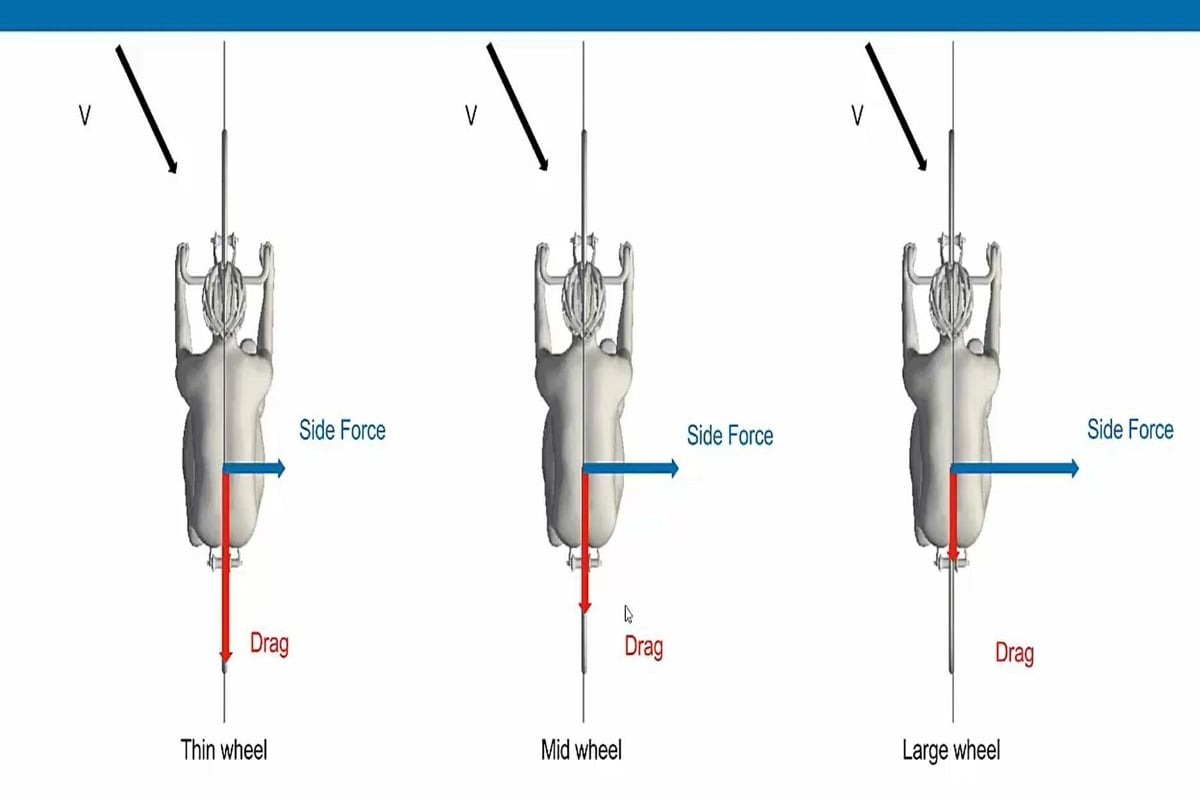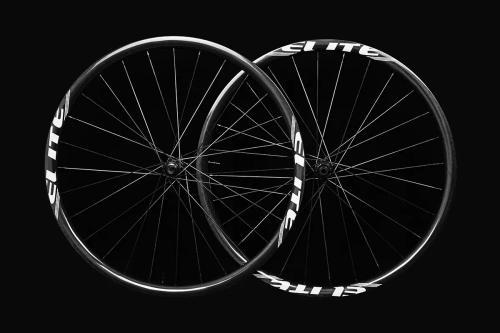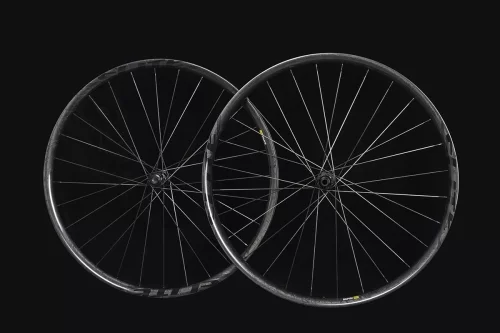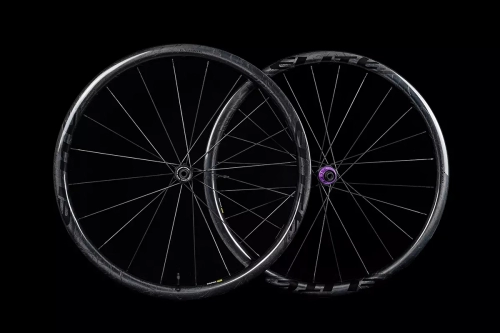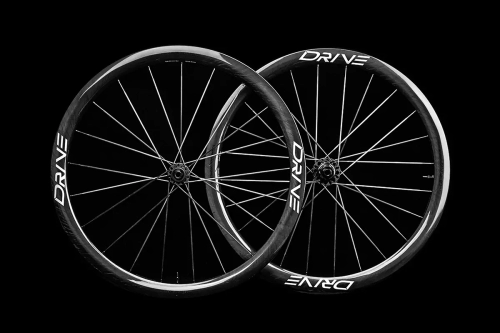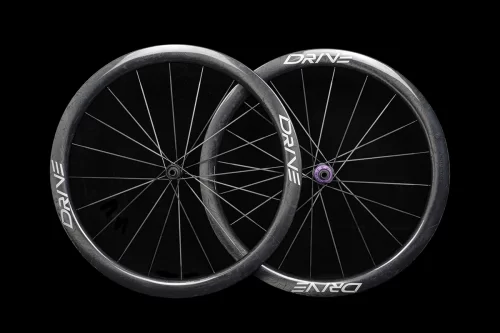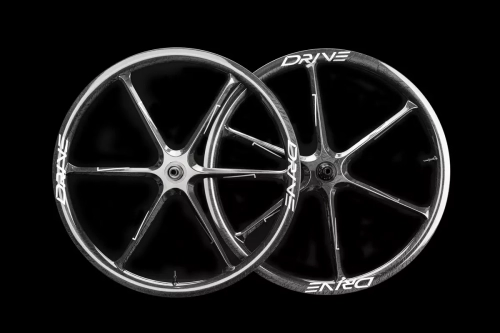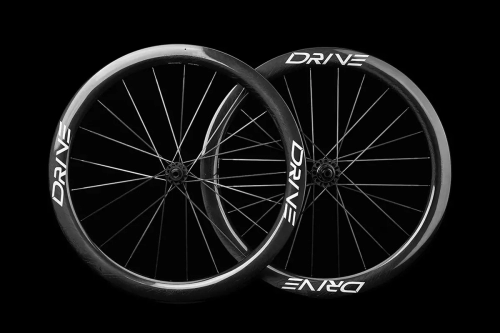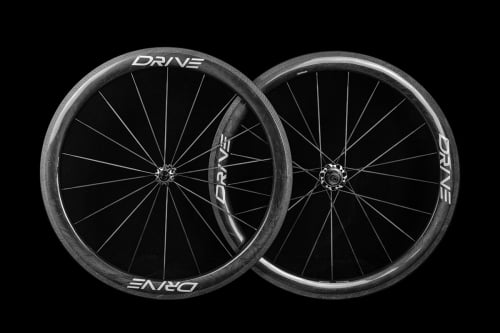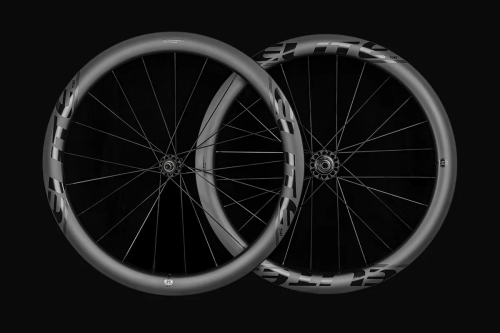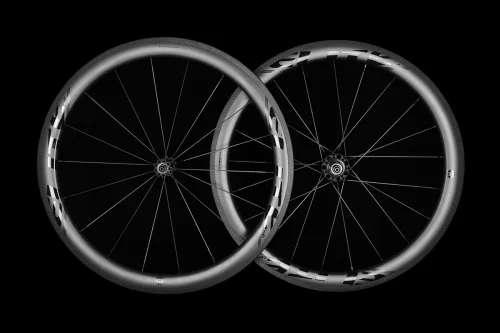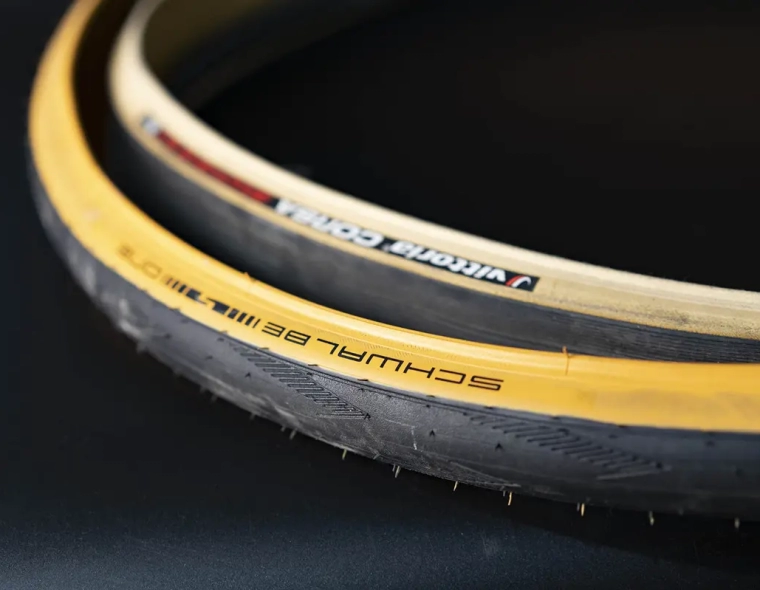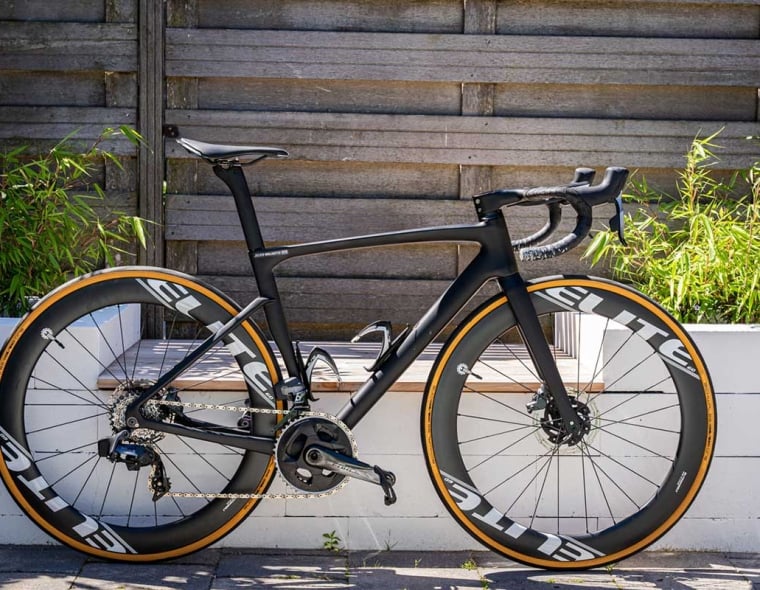Depth versus light weight
The weight of a rim and it’s depth are very important factors to consider when choosing a wheel. Lightweight wheels allow for faster acceleration, while deep section wheels offer improved aerodynamics. Having light wheels is certainly great, but the importance of aerodynamics cannot be overstated when assessing your road bike’s overall performance.
As windtunnel and CFD testing has improved over the last two decades, a better understanding of how aerodynamic principles apply to cycling has revolutionised thoughts on wheel design.
The material carbon fiber can be used to produce deep section wheels that are lighter and stronger than their traditional aluminum counterparts.
Depth versus width
Recently, there has been a demand for more aerodynamic wheels. Manufacturers have catered to this demand by not only producing deep section wheels, but also wider ones. Slightly wider rims can better seat larger tires which can improve ride quality.
Aerodynamic influence on different depth wheel
There is a wide range of rim depth choices, ranging from 20-88mm as well as options like disc wheels. They all have their own strengths and weaknesses. Let’s take a look at how rim depth is related to aerodynamics.
Deep and shallow wheel aerodynamic analysis
1.Wheel depth can have a significant effect on the overall performance of a bike
2.Deep-section wheels have less aerodynamic drag but are more susceptible to being affected by crosswinds.
3.For riding without crosswinds or on a velodrone, we suggest using deep-section wheels
4.In riding conditions with significant crosswinds, we suggest to use mid-section or shallow-section wheels.
Shallow-section aerodynamic CFD analysis:

Deep-section aerodynamic CFD analysis:

Rim depth and crosswind stability:
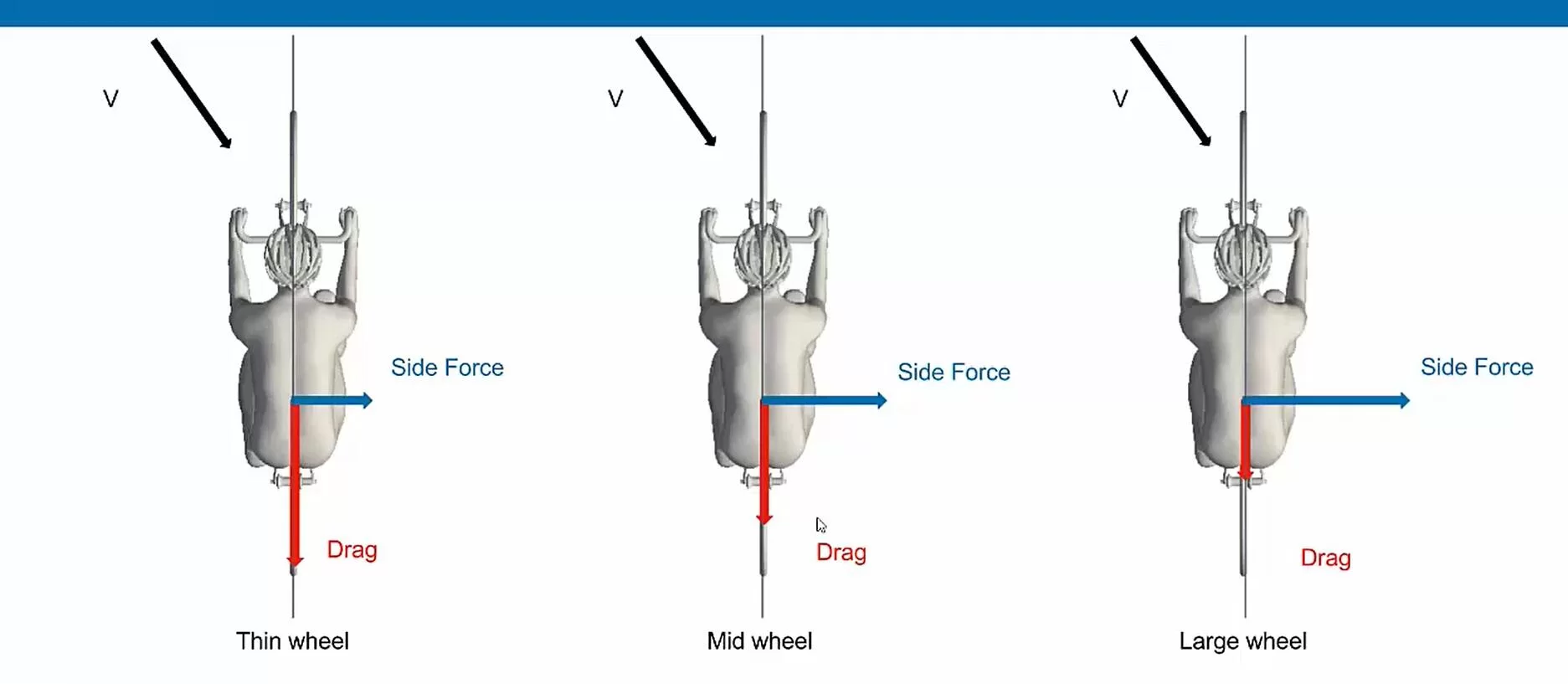
Image from Simscale.com
In general, the deeper the rim profile, the more aerodynamic it will be. To create a deep section wheel, more carbon fiber is required. This will lead to an increase in weight, but it has been shown that in most situations, a reduction in drag more than makes up for an increase in weight.
Finding the right balance between increased rotational mass and improved aerodynamics is what you should consider when making your choice. In general, riders would see ideal results with rims ranging from 35-60mm. This range offers good aerodynamic benefits without sacrificing too much in terms of rotational mass.
A notable drawback with wheel depth is that they are more susceptible to crosswinds. The larger a wheel’s side profile, the more sensitive it will be. This is an even greater issue for lighter riders. In certain windy conditions, they may face significant difficulty counter-steering as well as maintaining control..(see illustration above)
If you often ride in places that are prone to gusty winds, a deep-section wheel might be uncomfortable to ride as it could be difficult to control. Wheels that have a rim depth of 60mm or greater might not be suitable for every day riding on open roads in some weather conditions. If you often train in hilly areas, it would be a wise decision to opt for lightweight wheels with rim depths between 25-45mm.
Choosing between U–shape, V–shape, and UV–shape rim profiles
A U-shape rim profile tends to be slightly more stable when exposed to crosswind conditions. V-shape rims are, in general, the most aerodynamic choice when crosswinds are minimal. A UV-shaped rim is essentially a balance between them. This rim profile takes the good qualities of both and is often the most practical in real-world conditions.

Elitewheels’recommendations:
Elitewheels 24-35mm rim depth wheelset:
- US$739.00Select options This product has multiple variants. The options may be chosen on the product page
- US$739.00Select options This product has multiple variants. The options may be chosen on the product page
- US$659.00Select options This product has multiple variants. The options may be chosen on the product page
Choosing a wheelset will offer certain advantages. These wheels are essentially pure climbers, especially on steeper gradients. due to the low rotational mass, they are excellent choices for acceleration, such as in certain crit races. There are also very stable and almost immune to crosswinds. For riders living in mountainous areas or places with very windy conditions, this rim depth is for you.
Elitewheels 35-49mm rim depth wheelset:
- US$1,189.00Select options This product has multiple variants. The options may be chosen on the product page
- US$1,169.00Select options This product has multiple variants. The options may be chosen on the product page
- US$1,269.00Select options This product has multiple variants. The options may be chosen on the product page
- US$1,299.00Select options This product has multiple variants. The options may be chosen on the product page
Wheels in this range are often considered by many to be the best all-rounders. They are appropriate for most conditions and are the choice of most pro riders and consumers alike. Wheels with this rim depth do well in both road and gravel conditions.
Elitewheels provides many wheelsets that belong in this group. Our DRIVE 40 road wheelset and G45 gravel wheelset are just two of the many options we offer. They both take advantage of our UNI carbon techonology and lightweight, aerodynamic spokes. In fact they are much lighter than most wheels of shallower rim depths and rival the aerodyamic properties of deeper-section wheels. This is in part due to the spokes which make the wheelset exceptionally stiff. This improves the overall feel of the ride, allowing for even faster acceleration and better power transfer. In order to make the wheel a true all-rounder, we also designed it to have a UV-shaped rim profile, giving it both good aerodynamic qualities as well as stability. The DRIVE 40 disc road wheelset comes in at only 1260g. The G45 gravel wheelset is only slightly heavier at 1300g.
Elitewheels 50-60mm rim depth wheelset:
- US$1,189.00Select options This product has multiple variants. The options may be chosen on the product page
- US$1,169.00Select options This product has multiple variants. The options may be chosen on the product page
- US$599.00Select options This product has multiple variants. The options may be chosen on the product page
Wheels in this range put more emphasis on aerodynamics, but are not purely focused on aerodynamics like those used in a time trial or triathlon. These are more suitable for riders who do most of their riding in relatively flat conditions. They are more aerodynamic and have a certain aesthetic appeal. They are of course more susceptible to crosswinds. Just like the DRIVE 40 disc road wheelset, the DRIVE 50 disc makes use of the same carbon spokes, UNI carbon, and UV-shaped rim. The wheelset comes in a only 1300g, which is a weight much lighter than others in it’s class.
Elitewheels 60mm and above rim depth wheelset:
- US$599.00Select options This product has multiple variants. The options may be chosen on the product page
- US$599.00Select options This product has multiple variants. The options may be chosen on the product page
Wheels that have rim depths of 60mm and greater are all purely focused on giving the rider the best aerodynamic performance. These offer best results on relatively flat courses with low probability of crosswinds. Under calm conditions, they are truly slippery through the air. This is why they are favorites among triathletes and in time trials where every second counts as long as it is not particularly hilly. They are more often used on the rear wheel of a bicycle rather than the front, as deep-section front wheels are less stable.


